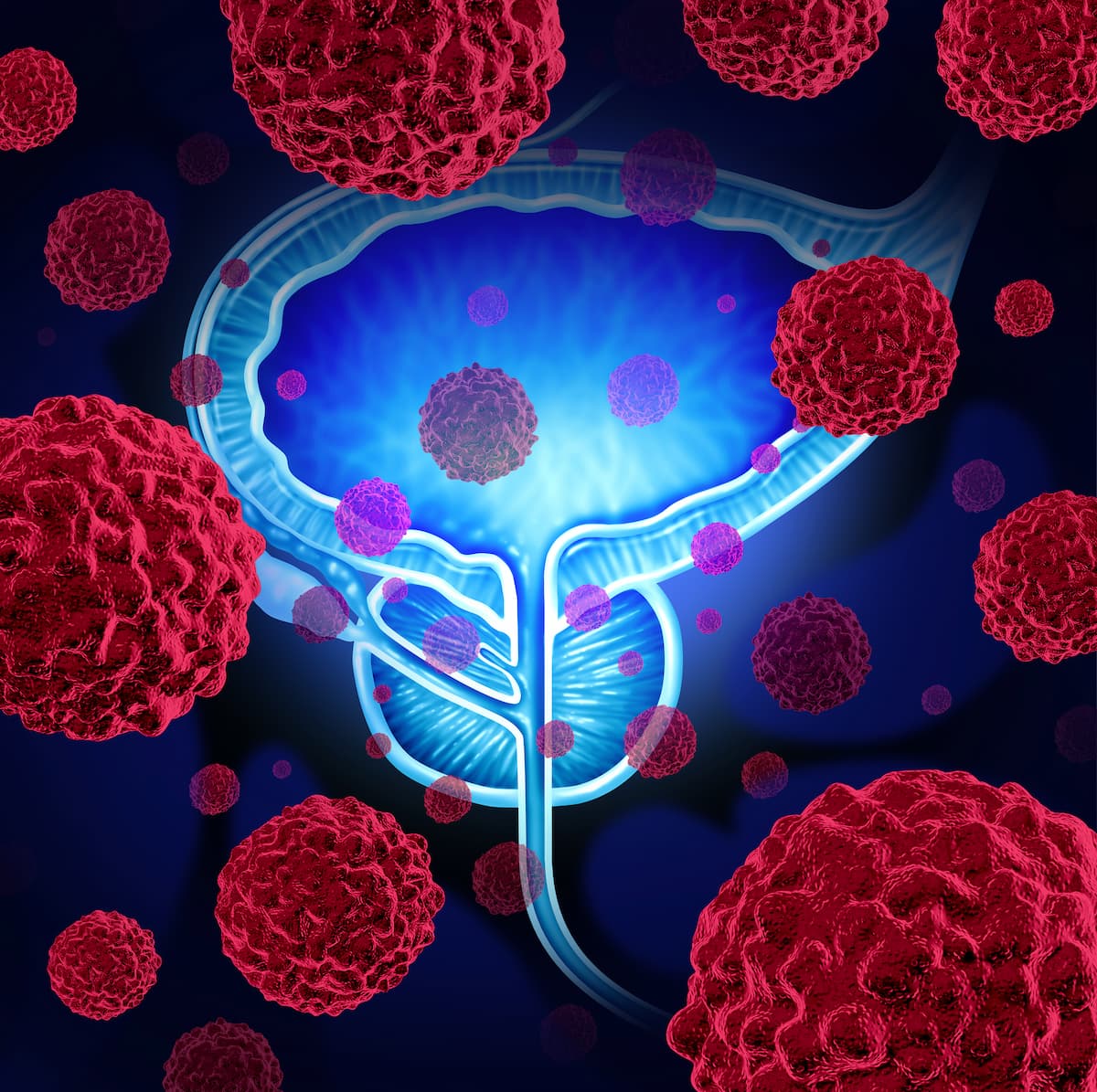EBRT Regimens Elicit 15-Year Prostate Cancer Survival Outcomes
More adverse factors occurred in those with intermediate-risk prostate cancer undergoing neoadjuvant androgen deprivation therapy than those who did not.
More adverse factors occurred in those with intermediate-risk prostate cancer undergoing neoadjuvant androgen deprivation therapy than those who did not.

External beam radiation therapy (EBRT) with or without short-term neoadjuvant androgen deprivation therapy (STAD) elicited 15-year survival in patients with intermediate-risk prostate cancer (IRPC), according to a study presented in a poster session at the 2025 ASCO Genitourinary Cancer Symposium.1
Data from the trial revealed that at a median follow-up of 12.0 years and a maximum of 19.8 years, the 15-year prostate cancer–specific survival (PCSS) rate was 91% for patients with IRPC undergoing STAD plus EBRT and those receiving EBRT alone (P = .67). Additionally, the 15-year overall survival (OS) rate was 53% for those undergoing STAD plus EBRT and 51% for those undergoing EBRT alone (P = .82).
Additionally, the metastasis-free survival (MFS) rate after 15 years was 85% vs 83% in the STAD/EBRT and EBRT arms, respectively (P = .59). Furthermore, the 15-year freedom from biochemical failure (FFBF) rates were 52% and 49% in each respective arm (P = .41).
“After 15 years of follow-up, [patients with] IRPC treated with STAD [for 6 months with or without] EBRT [at] 73.8 Gy experienced a PCSS [rate] of 91%, despite a high prostate-specific antigen [PSA] failure rate of 49% to 52%,” Barry W. Goy, MD, radiation oncologist at Kaiser Permanente Los Angeles Medical Center, wrote in the poster.1 “It is unclear if 6 months of STAD in addition to EBRT can improve PCSS or OS for IRPC, or just merely delay PSA progression.”
Patients with IRPC (n = 566) were enrolled and treated from 2004 to 2007 with EBRT at a median dose of 7380/180cGY to the 98% prostate isodose. Of those patients, 336 were given leuprolide for a median duration of 6 months, and the remaining 230 were treated with EBRT alone. FFBF was defined by a PSA nadir greater than 2.0 ng/ml.
Additional data from the study showed that the 10-year PCSS rate was 96% in patients who underwent STAD plus EBRT vs 98% in those who underwent EBRT alone at a dose of 73.8 Gy after a median follow-up of 12.0 years (P = .34). Comparatively, a previous study published in JAMA, which enrolled 206 patients with localized, unfavorable-risk prostate cancer, showed an approximately 94% 10-year PCSS rate with STAD plus EBRT vs approximately 81% with EBRT alone (P = .02).2 Patients on trial received 70 Gy of EBRT for a median follow-up of 7.6 years.
Furthermore, in a separate trial published in the New England Journal of Medicine, which enrolled and assigned 1979 patients with stage T1b, T1c, T2a, and T2b prostate adenocarcinoma and a PSA level of 20 ng/ml to receive either EBRT alone (n = 992) or EBRT with STAD for 4 months (n = 987).3 At an EBRT dose of 66.6 Gy and a median follow-up of 9.1 years, the 10-year PCSS rates were approximately 97% in the EBRT plus STAD arm and approximately 89% in the EBRT alone arm (P = .001).
Multivariate analysis revealed that adverse factors were greater in the STAD group than those who underwent EBRT alone. Notable clinical factors included clinical stage (P = .02), inactive PSA (P <.01), and Gleason group (P = .02).
Additionally, a previous study presented by Goy at the 2018 ASCO Genitourinary Cancer Symposium showed that of 574 patients who underwent EBRT at a median dose of 75.3 Gy, the 10-year FFBF rate was 58.8% (P < .0001).4 This matched the 10-year FFBF rate for those undergoing radical prostatectomy (n = 819; 58.8%), and was numerically lower than those undergoing brachytherapy (n = 110; 82.0%).
References
- Goy BW, Yao J. Fifteen-year outcomes of external radiation with or without 6 months of neoadjuvant deprivation therapy for intermediate risk prostate cancer. J Clin Oncol. 2025;43(suppl 5):388. doi:10.1200/JCO.2025.43.5_suppl.388
- D’Amico AV, Chen MH, Renshaw AA, et al. Androgen suppression and radiation vs radiation alone for prostate cancer: a randomized trial. JAMA. 2008;299(3):289-295. doi:10.1001/jama.299.3.289
- Jones CU, Hunt D, McGowan DG, et al. Radiotherapy and short-term androgen deprivation for localized prostate cancer. N Engl J Med. 2011;365(2):107-118. doi:10.1056/NEJMoa1012348
- Goy BW, Burchette RJ, Soper MS, Chang T, Cosmatos HA. Ten year treatment outcomes of radical prostatectomy vs external beam radiation therapy vs. brachytherapy for 1,503 patients with intermediate risk prostate cancer. J Clin Oncol. 2018;36(suppl 6S):47. doi:10.1200/JCO.2018.36.6_suppl.47
Newsletter
Stay up to date on recent advances in the multidisciplinary approach to cancer.
Navigating Treatment Intensification in Metastatic Hormone-Sensitive Prostate Cancer
A patient case of a 50-year-old man with hormone-sensitive prostate cancer sparked a debate among oncologists regarding the best course of action.